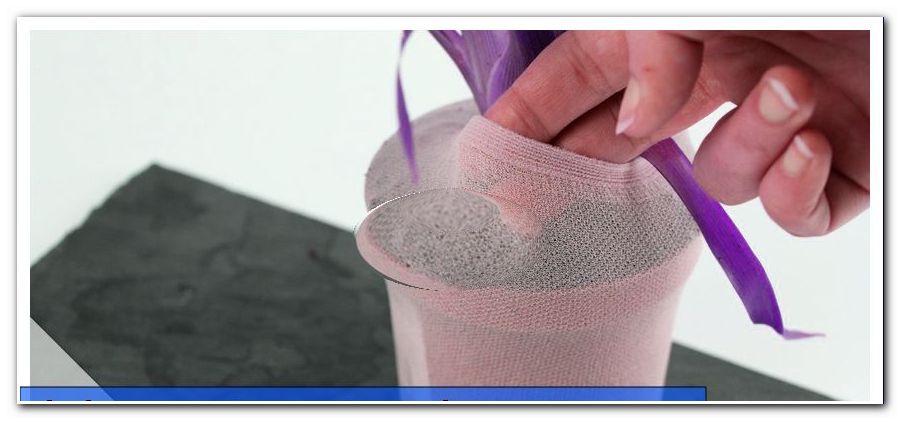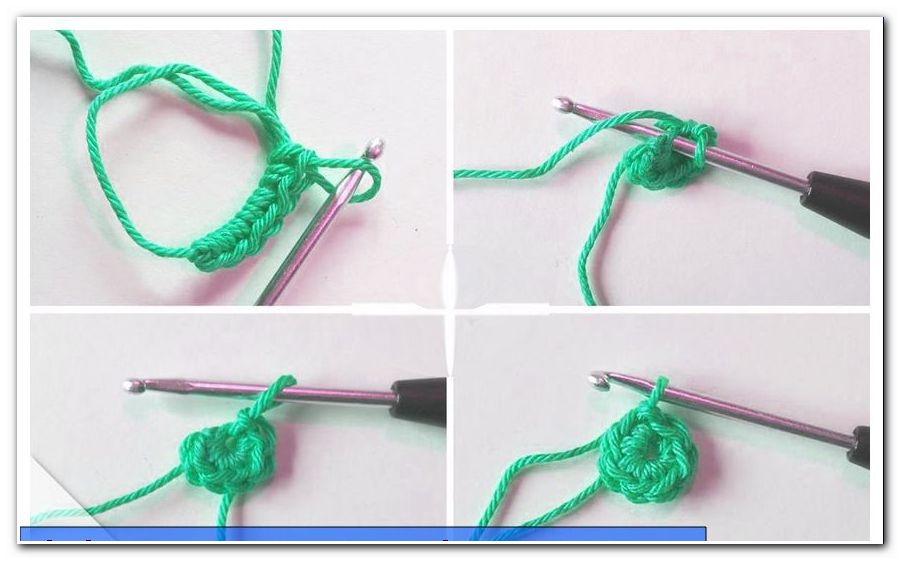Bog marshmallow (Hibiscus moscheutus) - Care information
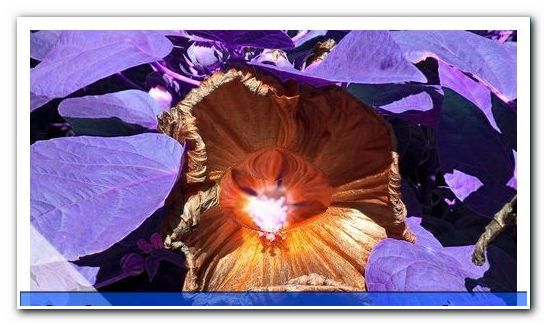
- Location
- plant substrate
- planting time
- plants
- to water
- Fertilize
- clean out
- cut
- wintering
- proliferation
- Diseases
- pests
The swamp marshmallow has only gained popularity in recent years, but with all its might. These eye-catching flowering plants are the eye-catcher in every garden. Often they are cultivated as container plants, but can also be easily planted out. The swamp marshmallow convinced by its huge flowers, diameter of 20 cm and more are the order of the day. The flowers last only one day, but over the years they are very many, so that a long flowering time is guaranteed.
The swamp marshmallow are usually hybrid plants. They are offered as perennial hibiscus or giant hibiscus. The shoots are about 1m high. The flowers are huge in relation to the shrub size, reach a diameter of 25 cm. The problem with this hibiscus is overwintering. The plants are considered hardy, but with long-lasting deep frosts are difficult to clear. That's why they should be something protected. Many plant lovers do not dare to replant the plants, because it is often said that they thrive only in wine-growing climate.
The swamp marshmallow likes to spend time in spring. These plants freeze above ground in winter and drive out of the root again. This happens sometimes very late, only towards the end of May, of course depending on the weather. In the first spring, usually only 3 to 5 shoots appear, but every year 1 to 3 come, so that after a few years, a beautiful large plant is created, which carries a lot of huge flowers.
Location
At the location it is important that it is warm and protected. When the wind blows, the big flowers are bloated, they look very unsightly and hang limp. Sun and heat are needed for flowering and wintering.
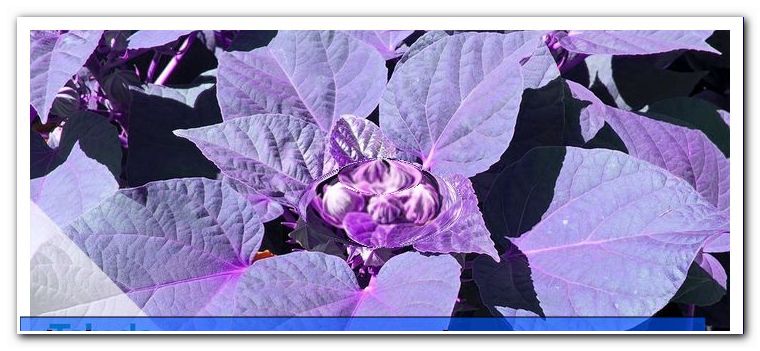
- full sun to slightly partially shaded
- protected from the wind, so that the big flowers do not tatter
- for the flower approach high summer temperatures are needed
- so ideal is a sheltered corner that lays many hours in the sun
- very heat tolerant
plant substrate
The plant substrate must be impermeable, but also be able to store some moisture. The swamp marshmallow likes a not too dry ground, but without waterlogging. The plants thrive particularly well on the edge of the water. Nutrients in the soil are favorable, on the one hand for the growth, on the other hand for many flowers.
- humos sandy to humus-rich
- wet, like water edge
- cool, so mulch
- permeable
- neutral
- Enriched with compost or manure
- no soil compaction
- Plant breeders often use peat culture substrate
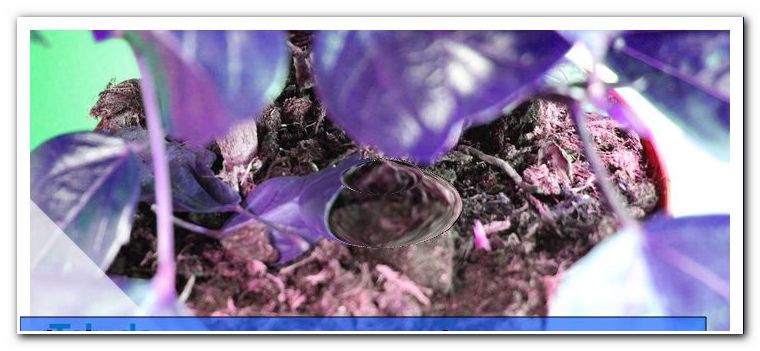 planting time
planting time
The best time for planting is in the spring, because then the time for rooting up to the first frosts is the longest. Hibiscus in the container can be brought into the soil throughout the summer. Often the plants are offered during the flowering period, ie in August. Then it is high time to plant them. Too late in the fall is not beneficial, because then there is a risk that the frost comes too early, before the hibiscus have grown.
- best in spring, so that the plant grows well before the winter.
- Autumn plants are dangerous because you never know when the first frost will come and how hard the winter will be
plants
When planting is not much to consider. If a good location is found, put the hibiscus in a sufficiently large planting hole. It is recommended to place the plant bale in a bucket of water first, so that the root ball can properly suck itself full. 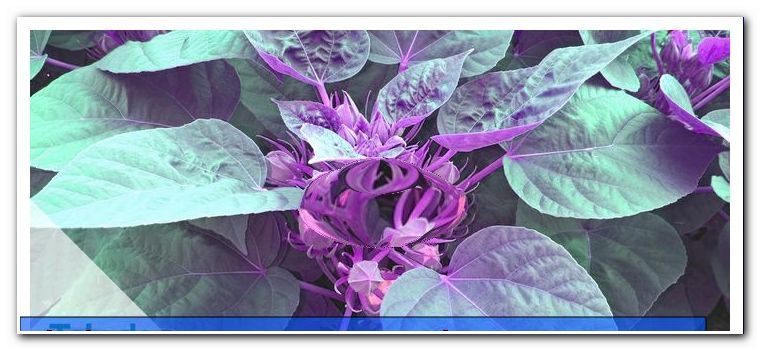
Even after planting, watering is absolutely necessary. Always pay attention to sufficiently moist soil in the next few weeks!
- sufficiently large planting hole
- set to the same height as in the vessel
- Planting distance 60 to 80 cm
- do not like root competition
- Hibiscus in the bucket
- never let it dry out
- Select vessel with sufficient earth volume
- hibernate frost-free
to water
When casting, make sure that the soil remains slightly moist evenly. The soil should not dry out. If this happens frequently, it damages the plant. It weakens her. However, waterlogging is essential. When penetrating, pour pervasively, but allow excess water to drain off. It's best to leave the saucer off. Container plants need a lot of water, so they have to be watered daily in the summer, if you want to have large flowers.
- water regularly, the soil should not dry out
- in case of lack of water - discarding buds
- Keep the soil slightly damp even in winter
Fertilize
Fertilization takes place during the growing season. When cutting back, fertilizing is the most important thing. Here horn shavings are doing well or alternatively compost. These hibiscus are starvationers. You need a complete fertilizer, eg Osmocote and additional iron.
- fertilize from May to the end of June
- then no more fertilizer to prevent freezing
- fertilize with patent potassium in September to increase winter hardiness
clean out
Bloom does not look so great, because the flower remnants are huge. In addition, everything sticks in the rain. Better to remove the leftovers.
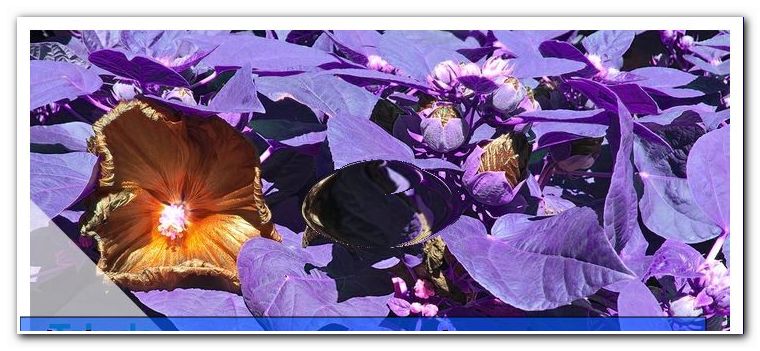
However, if you want seeds, you should leave them on the bush. For seed formation you have to grab the brush and dust it yourself.
- to extend flowering time
- faded looks visually not very appealing
cut
The cut is limited to cutting off the shoots in autumn or spring, as the plant moves in completely above ground, or even freezes. Otherwise it does not have to be cut.
- Pruning in late autumn to about 10 cm
- It can also be cut in the spring, but the bald shoots are visually no highlight
wintering
The perennial hibiscus, as the marsh hibiscus is often called, is often given as not hardy. You should overwinter it in the bucket and frost-free. You can certainly do that, but it is not necessary. The plants can certainly be planted, provided you do not live in the mountains or in a really cold corner. For safety's sake, the plants should be protected. A thick mulch or deciduous layer is helpful. It can still be brushwood laid, then nothing should happen. The brushwood also protects against too much wetness, which causes more damage to many plants in winter than the frost itself. 
- Cover the first 1 to 2 years with fir-spines
- also recommended otherwise protection
- Sun protection at bald frosts
- Keep the potted plants in a frost-free place, cool and moist
proliferation
Propagation is done by sowing or cuttings. Both methods work well, and sometimes it is difficult to get seeds of certain varieties. Also, the prices are quite high, which is certainly related to the fact that they are not easy to "produce".
- Sowing, cuttings
- Sow all year round, but best in January or February
- Indoor greenhouse makes it easier
- 1 cm deep
- at 18 to 25 ° C
- keep it moist
- Germination time 3 to 5 days
Diseases
Hibiscus moscheutus is very robust and healthy. Diseases are almost unknown. There are no specific diseases. Care mistakes can weaken the plants and make them more susceptible. Frost is cause of death number one, otherwise the plants will not kill anything that fast.
- pretty tough
- hardly any diseases and no specific ones
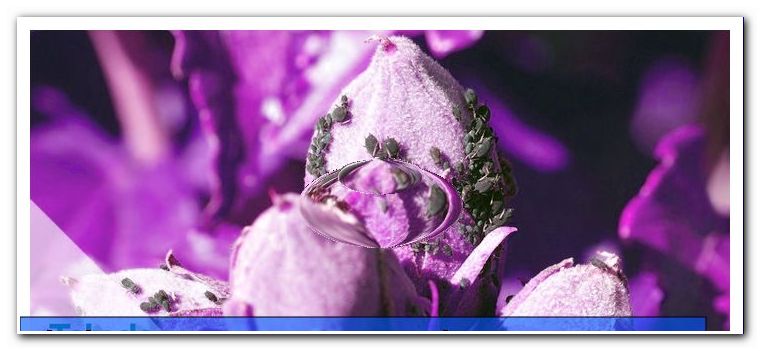
pests
Also pests occur rather sporadically. Aphids can occur again and again, but the hibiscus is not one of the preferred plants. In the frost-free hibernation in the tub spider mites occur again and again, especially when the temperatures are too high and the air is too dry. These pests are worse than aphids, especially if they are discovered very late and have then spread in bulk.
- aphids
- spider mites


 planting time
planting time 